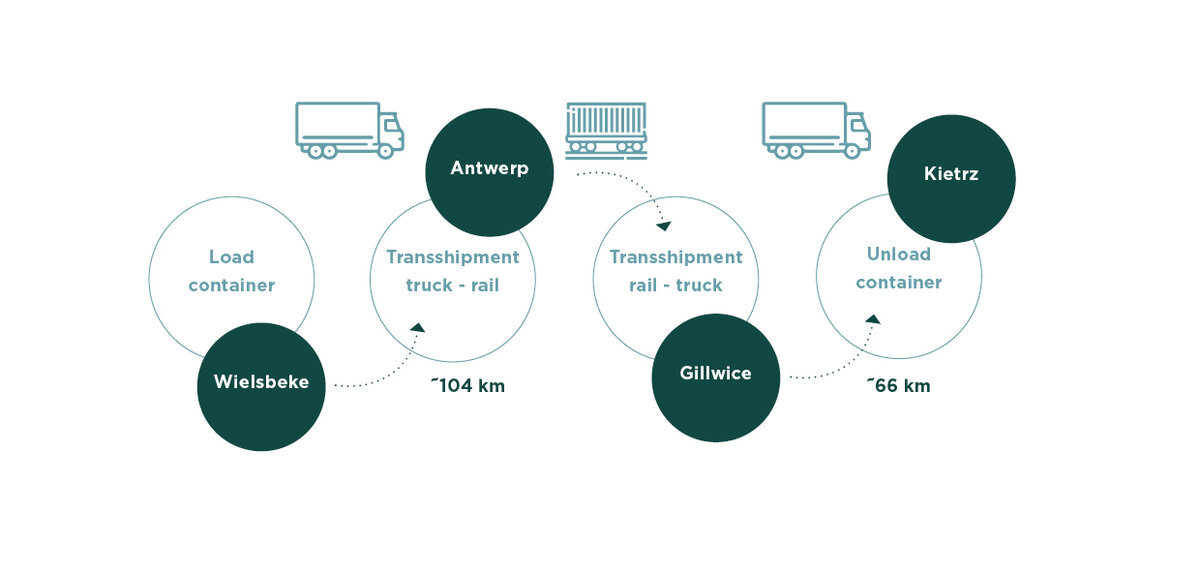B.I.G. is on a path to zero environmental footprint by 2030. That’s right, zero. To make this journey more tangible, we’d like to offer you a passenger’s seat from which you get immersed in our diverse sustainability projects. Every two weeks, we’ll share a new project. In this edition: Beaulieu Mats turns 1.270 km into 69 km.
Manufacturing companies often go to great lengths to make sustainable products, but then fail to show the same determination when it comes to distribution. Imagine which ecological gains they could achieve if they also turned the screws on road freight transport, for example? Well, you don’t have to imagine, as Beaulieu Mats has the facts and figures to make a strong case for multimodal transport.
Partnering up pays off
“Every month, we used to send dozens of trucks between our facilities in Belgium and Poland”, says Frank Vancoillie, Production & Operations Manager. “This meant a big burden on the environment, because a single road journey equaled 1.270 km. So, we approached an expert partner to help us find a more sustainable solution. With success: in cooperation with Multimodaal.Vlaanderen, a company advisory board in Flanders, we worked out an alternative route by train.”
By rail and over waterways
“Today, rail freight accounts for most of the distance. Trucks are only deployed for 170 km of the total trajectory. The ecological gains? A 49% drop in CO2 emissions. The next step is to also include inland waterways to cover the distance between our plant in Wielsbeke and the Antwerp train station. This will further reduce our need for trucks, turning the original 1.270 km into just 69 km. If all goes well, total CO2 emissions for the journey will then be 55% below what they used to be.”
Ready for more
“The advantage of multimodal transport lies in the most efficient combination of multiple means of transport, making use of the strengths of the different modes, such as convenience, speed, cost, reliability and predictability. Sometimes road transport will still come out on top, but we’d be negligent if we didn’t do our utmost best to find alternatives wherever possible. And that’s exactly what we’ll continue to do in the future.”
